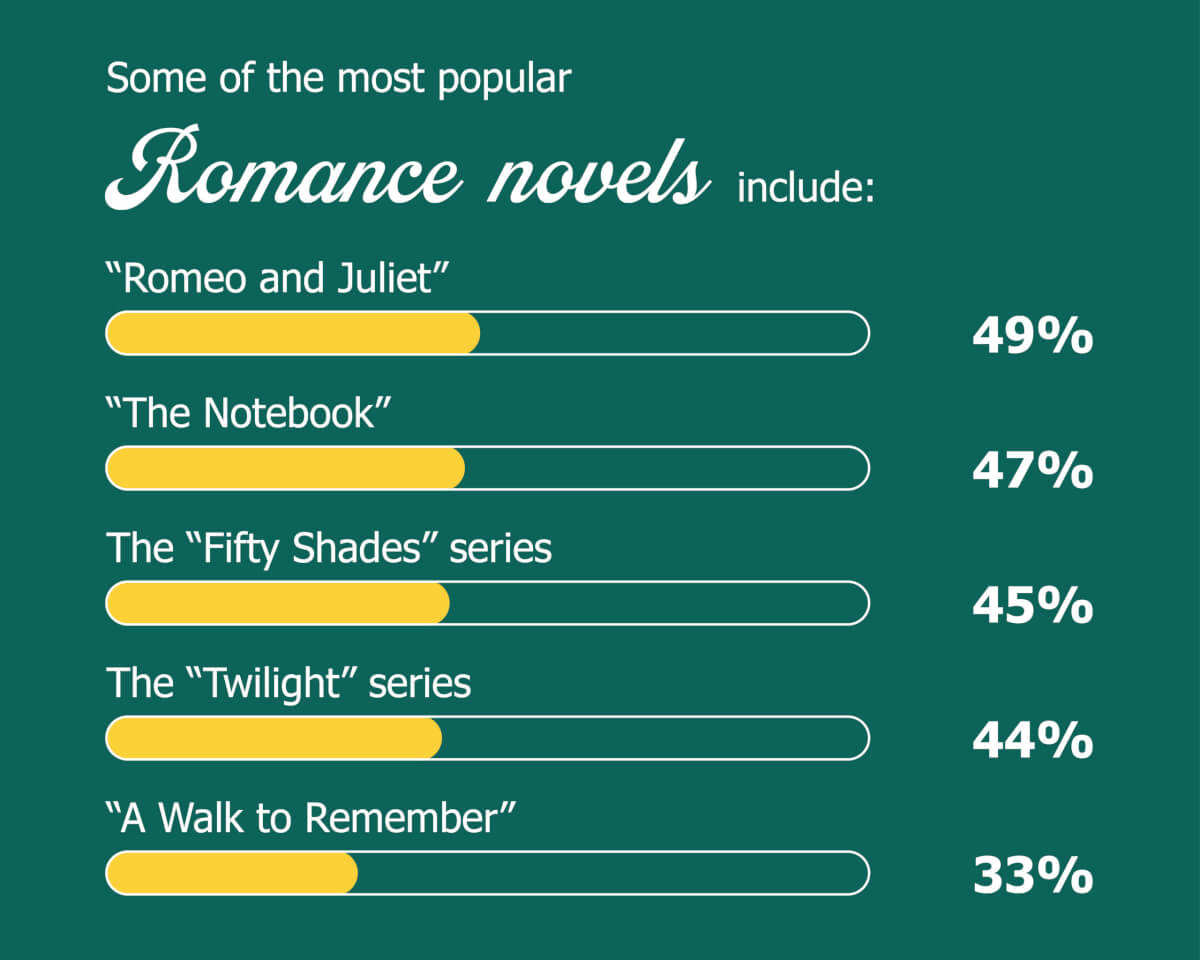NEW YORK — Noah from “The Notebook” is the most beloved book boyfriend (33%), according to a recent poll. The survey of 2,000 romance readers finds that Christian Grey from the “Fifty Shades” series (28%) and Edward Cullen from the “Twilight” series (21%) also made it into the top three of best book boyfriends.
As for the best book girlfriends, the top three are Anastasia Steele from the “Fifty Shades” series (27%), Bella Swan from the “Twilight” series (23%), and Juliet from “Romeo and Juliet” (25%).
The survey looked at how romance novels have shaped readers’ real lives and finds that, on average, those surveyed have read four romance novels within the past six months, with 25 percent getting in the romantic mood for Valentine’s Day.
Commissioned by ThriftBooks and conducted by OnePoll, the survey also found that a third of those surveyed say their interest in romance novels has most impacted their expectations of what love should feel like (33%) and their overall perspective of love and relationships (31%).
Three in 10 say books have inspired their expectations of what a good relationship is and the kind of person they want to be with (29%). Two in three readers even say it’s important for their real-life partner to share the same qualities as their favorite literary romance character. More than half of respondents in serious relationships say reading romance novels has made them more particular in choosing a partner (56%).

“Everyone loves a good love story, but who knew that it affects how people see their partner in real life?” says spokesperson Barbara Hagen, vice president of marketing at ThriftBooks, in a statement. “Results showed that the power of good storytelling moves people so much that it can affect their perceptions of love, relationships and the kind of person they want to spend their time with. For many, finding someone who makes their stomach flutter like their favorite romance story is the real-life version of getting that classic happily ever after.”
Those romance lovers may just get their happily ever after, sharing that their partner matches their favorite literary romance character’s humor (44%) and patience (41%). Four in 10 say their partner has gone as far as making a similarly grand gesture of their love as their favorite literary character (39%).
Further, 49 percent say a romance novel or plot has inspired them to “make a move” on their crush, like confessing their feelings (50%) or flirting with someone (44%). Romance reads have also brought hope to single respondents who feel more optimistic about being able to meet the right person (49%).
Some of the most popular romance novels include “Romeo and Juliet” (49%), “The Notebook” (47%), and the “Fifty Shades” series (45%). The “Twilight” series (44%) and “A Walk to Remember” (33%) also make the list of frequently-read romance novels.
American readers also enjoy reading romance novels for their happy endings (45%) and because they’re an escape from real life (45%). It’s no surprise, then, that three-quarters of those surveyed share that they believe in happily ever after in real life, and another 56 percent see the world through “rose-colored glasses.”
Similarly, 37 percent also say that romance books remind them that love is possible.
“For many readers, romance novels work twofold: helping them escape to a dreamy other world and inspiring them to keep believing in a happy ending,” says Hagen. “There’s something enticing about a fictional world with a feelgood outcome that makes you want to escape your own world, and also compels you to believe that those feelings of giving love and being loved could be waiting for you at the next turn.”
Survey methodology:
This random double-opt-in survey of 2,000 people who read romance novels was commissioned by Thriftbooks between Jan. 17 and Jan. 21, 2024. It was conducted by market research company OnePoll, whose team members are members of the Market Research Society and have corporate membership to the American Association for Public Opinion Research (AAPOR) and the European Society for Opinion and Marketing Research (ESOMAR).
